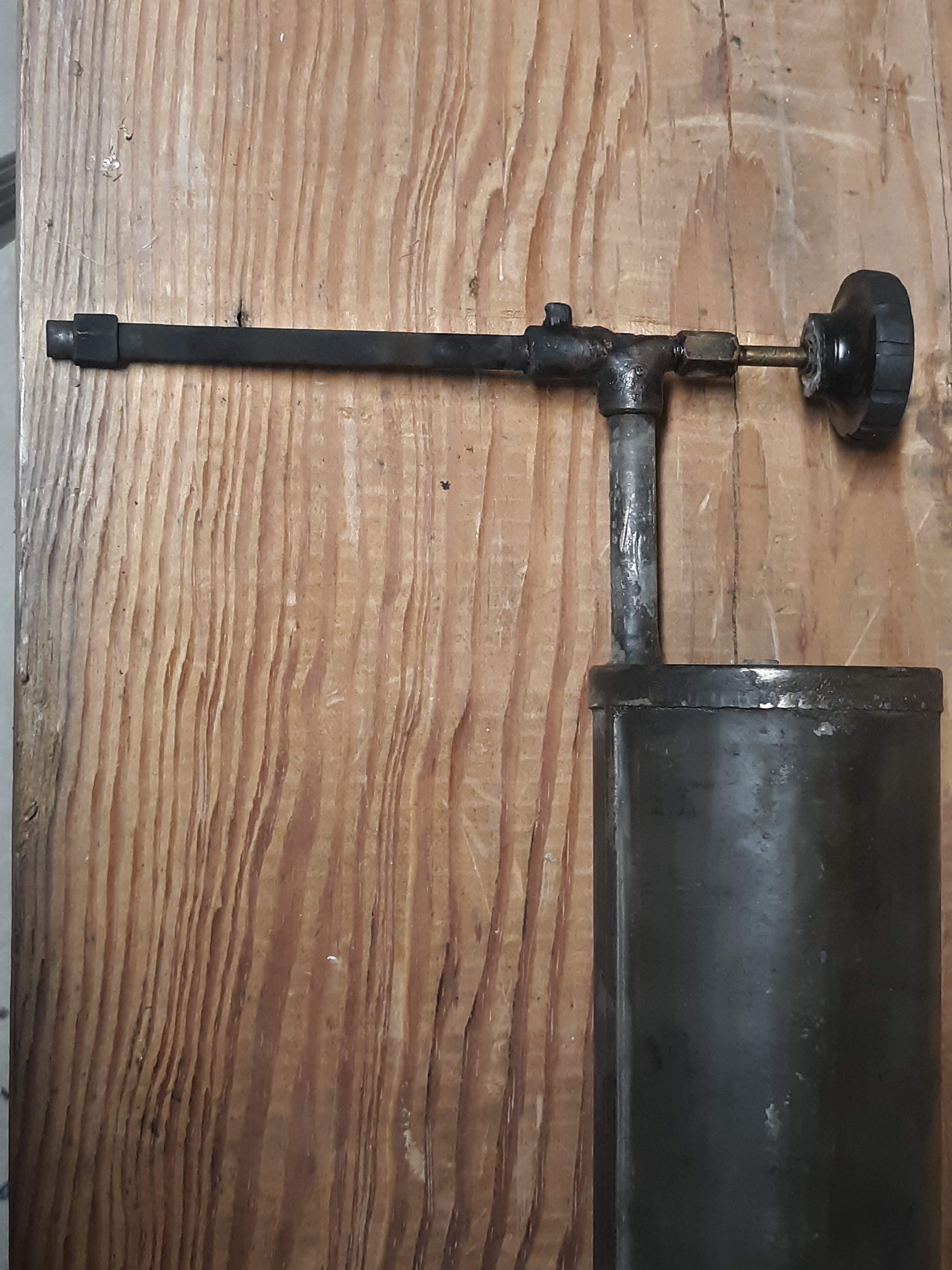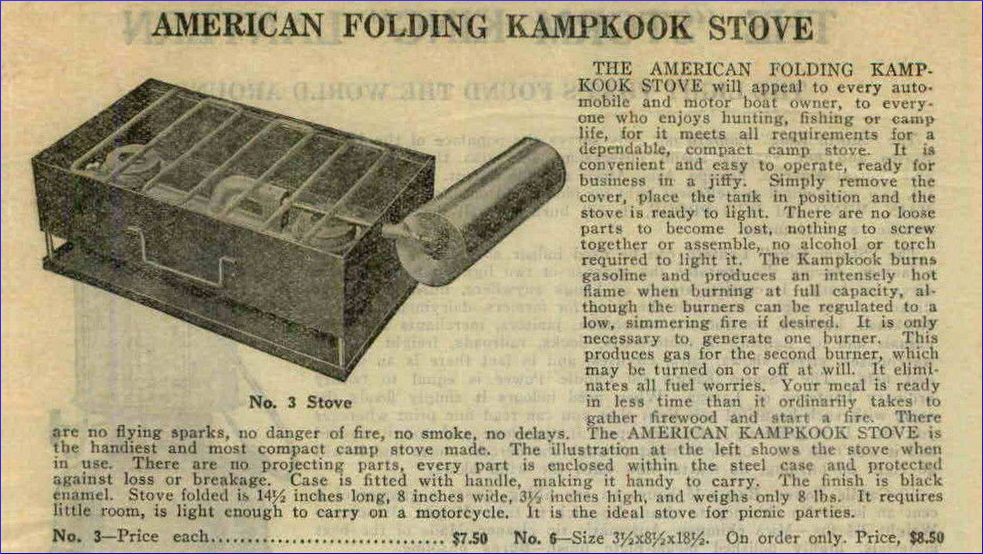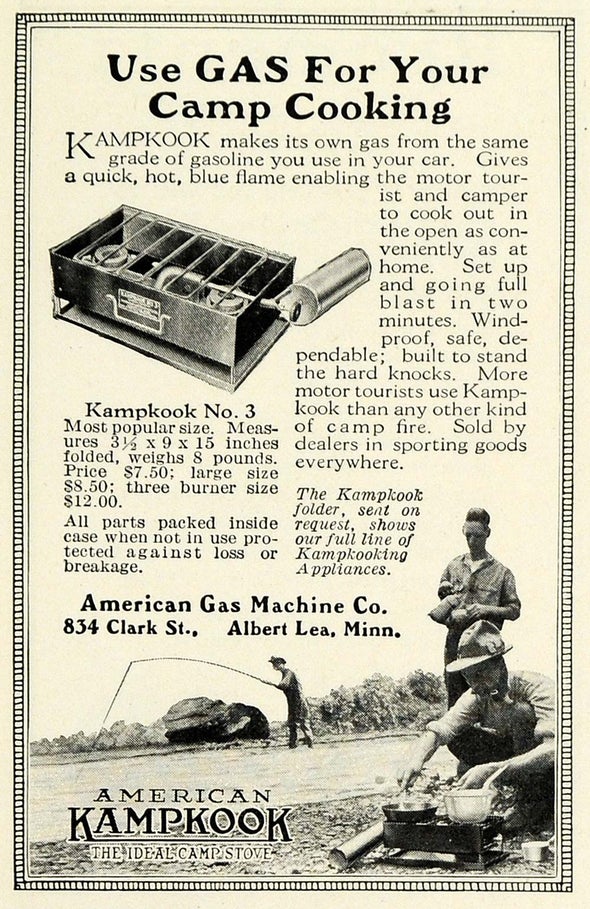
“If there is a separate commissary
tent, the cooking can be done on a common blue-flame oil or gasoline stove, set up on a perfectly level stand. Such a stove is useless out of doors unless fitted with a wind-shield. Do no cooking in
the living tent: it attracts flies and vermin.
The best cooking stoves for campers are those specially designed for the purpose, and burning wood.” (Kephart 1918, 62)
It is interesting to me that Horace Kephart did not embrace gas stoves but it also fits the usual tradition of being skeptical of new technology. During this same time period people were just starting to grow accustomed to having gas lighting in their homes with minimal fear and the new technology of electricity was the new concern. These are trends that we see whenever new technology is introduced, some from natural inclination to be wary and some from competing businesses who want to manipulate your feelings a certain way. We know from living 100 years later that the gas stoves did take off and most campers and backpackers agree that portable fuel is much more convenient than the struggles of procuring enough quality fuel from nature to cook on.
The American Gas Machine Company which made KampKook stoves, lanterns, water heaters and more was founded in 1896 by Thomas H. Yort and Hans C. Hanson in Albert Lea, Minnesota and lasted until 1957. When the company was founded at the end of the Gilded Age and adapted easily into the Progressive Era of American history. Both periods were times of immense change due to the Second Industrial Revolution which provided technologies and opportunities for companies to thrive. In the situation of the American Gas Machine Company it was the growing availability of refined petroleum at reasonable prices that led to new industrial applications and home use. Two combating heads of the Gilded Age helped this along, John D. Rockefeller of Standard Oil (1870) and Thomas Edison of Edison Illuminating Company (1880). Both of these giants competed to provide America with an affordable and reliable form of home energy.














Kampkook stoves were produced by the American Gas Machine Company in response to the exploding recreation trend of cross country travel, exploration, and camping. It is hard to determine where the name KampKook originated from, several other companies used the term KampKook as a slang term to mean camping stove. I have seen Prentiss Webers Ads from the early 1900’s that also promote their own KampKook. Due to this it is hard to say what company, if any, started the KampKook term. Perhaps it was just something picked up by consumers and adopted by companies to capitalize on it, more definitive and ongoing research will help determine the answer.



There were so many influences that led to motor camping popularity but none of which is more powerful than the excess money floating around the U.S. after WWI. Now in truth, much of this wealth was really a mirage due to the new credit economy of the 1910’s and 1920’s. People were borrowing money to buy luxury goods and even investing in the stock market, which later led to the Great Depression of the 1930’s. There were certainly societal pressures to embrace spending due to the technological explosions of the early 1900’s as well. Cinema depicted a world of adventure outside of rural and urban America, transportation by automobile, faster trains, and ocean liner ships opened the doors to explore those worlds. The new National Park system, Civil War and other military reunions, and fraternal organization gatherings across the U.S. encouraged travel. The labor movements of the early 20th century also opened up more free time for the working class to enjoy recreation.

It was an exciting time in a world that was changing fast. A regular occurrence in period writing journals and magazines stressed the loss of a traditional past and encouraged people to travel to see what was left of frontier living. Sporting clubs and youth organizations also promoted the education of outdoor skills. Many youth novels at the time depicted a wild and shrinking frontier.
The Kampkook stove I have is the No. 3 model which seems to be the most basic model from what I have seen. In 1920 the cost of an AGM KampKook No. 3 was $7.50 which is the modern equivalent of $105.43 (March 2022). There is a learning curve in operating the stove because there are several differences in lighting and operating the stove in comparison to the more modern white gas or propane stoves. A positive to the older technology is that the parts are basic so there is less that can deteriorate and go wrong. Even after 100 years my stove lit right up and was able to be used once I learned how to pressurize the tank and the special lighting process. If you are interested in learning how one lights these old stoves, be sure to check out my video above!
Bibliography
Horace Kephart, “The Book of Camping and Woodcraft : A Guide for Those Who Travel in the Wilderness / by Horace Kephart.,” HathiTrust (The Macmillon Company, 1918), https://hdl.handle.net/2027/pst.000009209466?urlappend=%3Bseq, 146.
Forest and Stream, 1922, https://play.google.com/books/reader?id=41HlAAAAMAAJ&pg=GBS.PA288&%3Bpg=GBS.PA280&%3Bhl=en

If you enjoy traditional campcrafting, bushcrafting, hiking, hunting, or other outdoor adventure then I invite you to join us in the Guild!